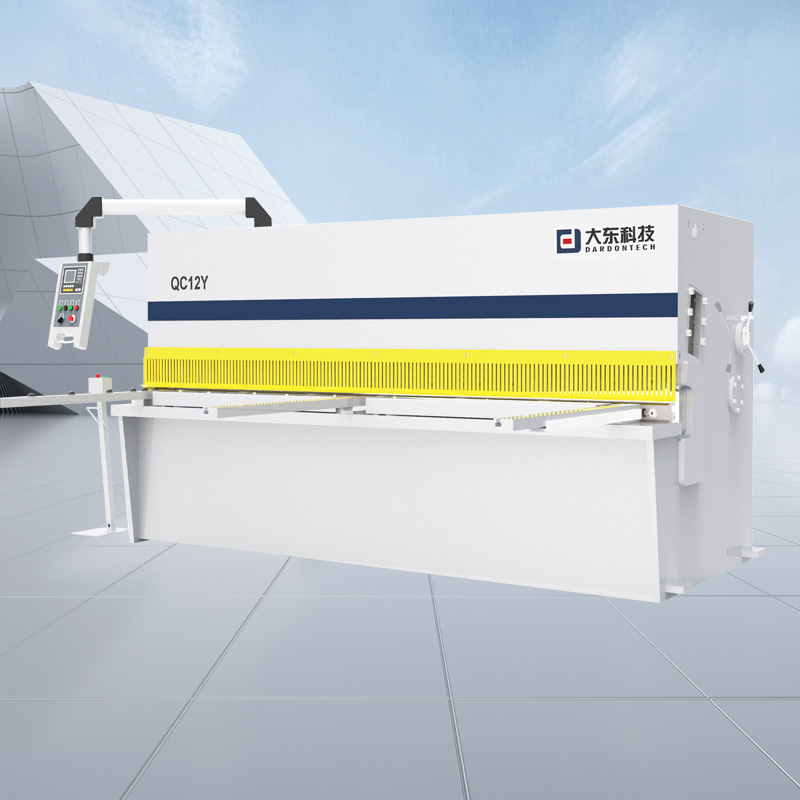Oblique blade shear(
shearing machine)
One cutting edge of the oblique cutting machine is placed at an angle to the other. According to the motion characteristics of the shear mechanism, the oblique edge shear can also be divided into upper cutting type, lower cutting type and composite type.
Up cut oblique blade shear(
shearing machine)
The lower cutting edge of the shear is straight and fixed, and the upper cutting edge is inclined and moves up and down to realize shearing. The up cut inclined blade shear is usually used as a separate equipment to cut wide plates. When the plate thickness is greater than 20mm, it can be used to cross cut the plates on the continuous operation line, but there should be a swing roller table. In addition, when the plate thickness is greater than 25mm and the disc can not be used to cut the edges, the up cut inclined blade shear shall be set on both sides of the continuous operation line for edge cutting.
Undercut oblique blade shear(
shearing machine)
The upper cutting edge of the shearing machine is fixed and is cut by the up and down movement of the lower cutting edge. Because the lower cutting edge moves upward for cutting, it does not need to set a swing roller table. It is generally used for cross cutting strip on continuous operation line. The cutting edge of this shear is usually inclined at the top and horizontal at the bottom. However, recently, the upper shear edge is horizontal and the lower shear edge is inclined. Production experience has proved that this type can ensure the perpendicularity of the shear surface relative to the strip centerline and surface. The disadvantage is that the structure is complicated because the pressing plate is placed below.
Compound oblique blade shear
(shearing machine)
At the tail of the continuous operation line, in order to divide the originally welded long strip into coils of a certain weight, a composite inclined blade shear is set. This kind of shear has a fixed double-edged knife rest in the middle and a movable knife rest up and down, also known as the upper and lower double-layer oblique edge shear. When the strip passes through the upper part of the fixed double-edged tool holder, the strip is rolled by No. 1 coiler. When it is necessary to separate rolls, the upper movable knife rest is lowered to cut off the strip, and the rear strip is rolled by another coiler through the lower part of the fixed double-edged knife rest.

